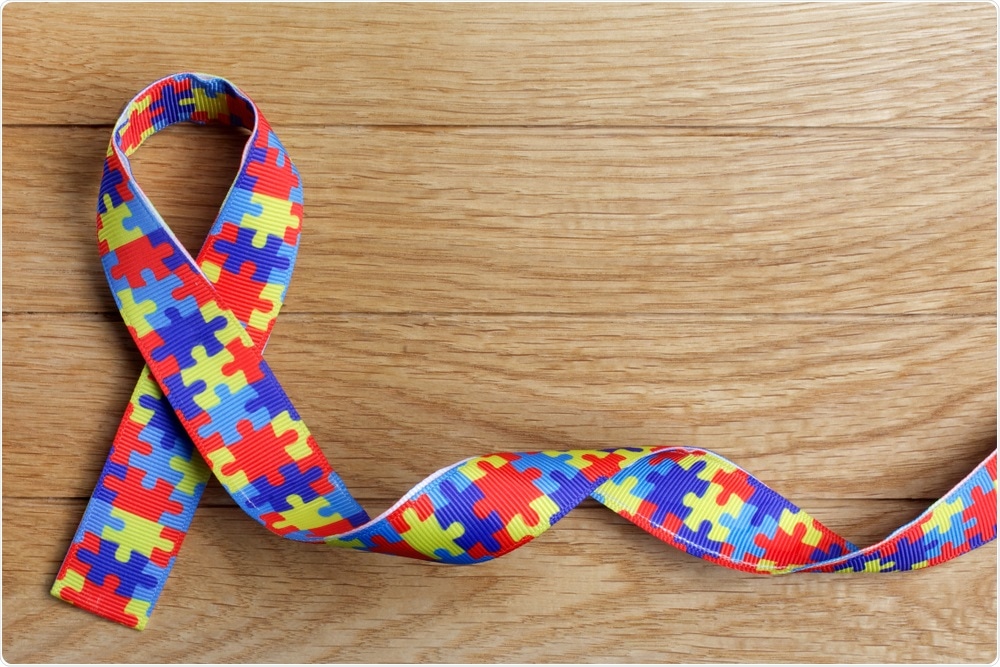Genetic mutations have been identified that seem to underly autism.
In a paper published last month in the journal Genetics and Genomics, a team across institutions in Ohio, Massachusetts, and Cologne outline how they found that duplications and deletions of long stretches of DNA are related to an elevated risk of autism in those who have mutations of the PTEN gene.

Image Credit: vetre/Shutterstock.com
This work could lead to earlier diagnosis of autism, allowing interventions to begin earlier to enhance therapeutic outcomes.
Exploring why PTEN gene mutations are linked with autism and cancer
The PTEN gene has long been associated with many disorders, including Bannayan–Riley–Ruvalcaba syndrome, Cowden syndrome (CS), Lhermitte–Duclos disease, and Proteus syndrome. More recently, studies have linked it to autism spectrum disorder (ASD), and it is considered to be one of the most common predisposition genes to the disorder.
Previous research has identified that PTEN mutations are associated with hamartomas, a form of benign growth, as well as being related to some types of cancer. In the last few years, several studies have elucidated the relationship between these mutations and autism, with around 2 to 5% of diagnoses being accounted for by these genetic mutations.
Currently, it is unclear why some people develop malignant neoplasms as a result of PTEN mutations, and others develop neurodevelopmental disorders and show developmental delay.
Scientists across multiple institutions in the US and Germany, including those affiliated with the Lerner Research Institute, Neurological Institute, and Taussig Cancer Institute at the Cleveland Clinic, Ohio, the Broad Institute of MIT (Massachusetts Institute of Technology) and Harvard, the University of Cologne, John Carroll University, and the Case Western Reserve University School of Medicine, aimed to uncover how a single gene can be responsible for initiating such unconnected clinical outcomes.
Specifically, the researchers aimed to discover why it is that most people with PTEN mutations do not develop autism. They designed a study to investigate what makes PTEN mutations in a small group of people lead to the development of autism and/or cancer.
The team set out to investigate the role of copy number variants (CNVs), deletions or duplications of DNA sequences within the genome, in developing the phenotypes of those with germline PTEN mutations. In uncovering the underlying mechanisms of the PTEN gene, doctors would have a chance to diagnose autism at earlier stages, making treatment more effective.
Uncovering the role of CNVs in PTEN mutations
The team collected genome data from a sample of 481 people with PTEN mutations. Of the sample, 110 had autism, a developmental delay, or both. The team ran an analysis where the total number of CNVs was counted in the genome of each participant.
Findings revealed that those with autism or developmental delay had an elevated number of CNVs than those with cancer or no condition at all.
In the second part of the study, the researchers scanned multiple genetic databases to generate a list of CNVs that are confirmed as being linked with various conditions of brain development.
Through analyzing this data the team found that these CNVs were present in 10% of those with autism or developmental delay, while just 2.6% of those without autism or developmental delay had them. In addition, 1.7% of those with cancer were shown to have these CNVs.
Therefore, the team was able to highlight certain CNVs in PTEN mutations that were distinct to autism, providing an answer as to why PTEN mutations can have disparate clinical outcomes.
A chance of earlier interventions
The team was able to uncover pathogenic CNVs that suggest an increased likeliness of ASD/neurodevelopmental delay. The benefit of this work is that scientists now of a method of detecting those at risk of ASD/neurodevelopmental delay at an earlier stage, allowing for interventions to begin earlier for a chance of better treatment outcomes.
Scientists will also aim to carry on the research to determine what causes the differences seen in ASD even when it is linked with the same genetic mutation. CNVs provide a starting point for this investigation.
Also, it is believed that the approach developed here will apply to the study of other genes that attribute to subtle differences in outcome.
Source:
Journal references:
Buxbaum, J., Cai, G., Chaste, P., Nygren, G., Goldsmith, J., Reichert, J., Anckarsäter, H., Rastam, M., Smith, C., Silverman, J., Hollander, E., Leboyer, M., Gillberg, C., Verloes, A. and Betancur, C. (2007). Mutation screening of thePTEN gene in patients with autism spectrum disorders and macrocephaly. American Journal of Medical Genetics Part B: Neuropsychiatric Genetics, 144B(4), pp.484-491. https://www.ncbi.nlm.nih.gov/pmc/articles/PMC3381648/
Yehia, L., Seyfi, M., Niestroj, L., Padmanabhan, R., Ni, Y., Frazier, T., Lal, D. and Eng, C. (2020). Copy Number Variation and Clinical Outcomes in Patients With Germline PTEN Mutations. JAMA Network Open, 3(1), p.e1920415. https://jamanetwork.com/journals/jamanetworkopen/fullarticle/2759847
Zhou, J. and Parada, L. (2012). PTEN signaling in autism spectrum disorders. Current Opinion in Neurobiology, 22(5), pp.873-879. https://www.sciencedirect.com/science/article/abs/pii/S0959438812000839